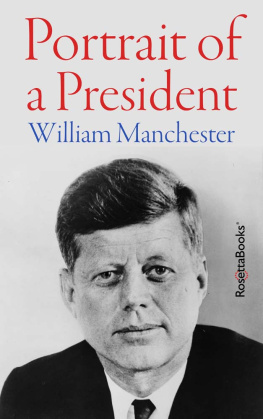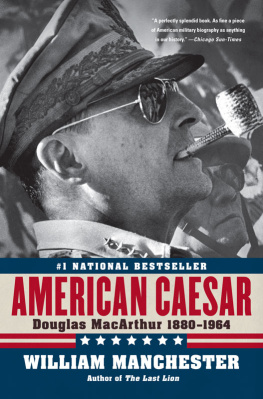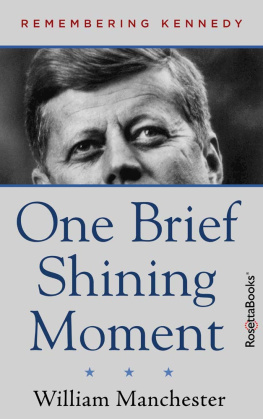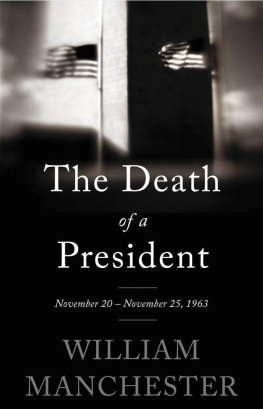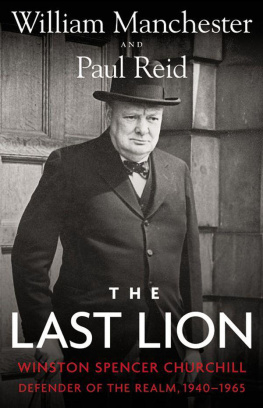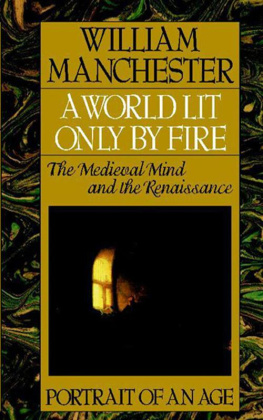Introduction to the First Edition
Inaugural day dawned bleak and cold, and as the morning wore on it grew glum. The preliminary ceremonies were lagging. Outside the Capitol, impatient spectators shivered, while inside, the President-Elect, sharing their mood, fingered his speech in the Military Affairs Committee Room. Ten minutes before noon he moved restlessly into the corridor, but he didnt get far; the Secretary of the Senate barred the way, explaining that the Upper House wasnt ready to receive him. All right, the President-to-be said cheerfully. Well go back and wait some more.
That was almost three decades ago. The following morningMarch 5, 1933a brief version of the episode was published on an inside page of the New York Times. Eight days later it appeared in Time, and there it was discovered in the 1950s by a Harvard professor preparing a multi-volume chronicle of the Roosevelt era. In itself the story is trivial, merely suggestive of Franklin Roosevelts resilience. History, however, is a gossamer spun of such incidents, and the pilgrimage of this one, from a brittle page of newsprint to Arthur M. Schlesinger, Jr.s The Crisis of the Old Order, tells a great deal about the spinners trade. Reporters and scholars are inclined to think of themselves as antithetical. Call a newspapermans copy recondite and he reaches for a pica ruler; tell a professor his paper is just journalism and he invites you to join him in the gym. The feud is an old one. It is time to stop it. The only difference between the two is a difference of time; todays journalism is tomorrows history.
Portrait of a President is journalism. The writer has labored on the other side of the barricade, but this monograph has been written while moving along the advancing edge of the present. It is not definitive in any sense, nor does it pretend to be an assessment of the Kennedy Administration. Proximity to great events distorts our vision, and the few tentative judgments I have set down may be quickly outdated. The political tide has a way of washing away those who would predict its course. I freely concede, for example, that on the morning after the off-year elections I may devoutly wish that I could run a few pages through the typewriter once more, and in that context it may be useful to point out that the period of my study has been from April 1961 to April 1962roughly, from Cuba to Big Steel. Some may conclude from this that the text is a narrative, beginning with failure and ending in triumph. For them one more warning flag must be hoisted. This is not a chronological account. It is, rather, an attempt to understand and explain a highly complex individual playing a unique role. Thus its material is not confined to the year of investigation. I have, as it were, revved the film of John Kennedys life through a series of projectors, stopping it whenever I found a relevant frame. The sum of these superimposed frames is, or is meant to be, something resembling a portrait.
Bibliognosts will note that there are few footnotes. Work of this sort cannot be annotated. Because so much of the material could only be attributed to what academics call personal information, the writer would be constantly referring himself to himselfa pedagogic absurdity. Moreover, if every fact were subject to direct citation, the manuscript could not have been written. Readers will find that I revere the Presidency and admire this President; nevertheless, those who are close to a Chief Executive in office are not likely to deal with any writer, however sympathetic, who cannot shield them from embarrassment. Thus from time to time the text refers to an aide, an ex-roommate, an adviser, etc. At present you have only my word that these people exist, although I have arranged to deposit my files in the Olin Library, Wesleyan University, Middletown, Connecticut.
My chief sources are personal observations of the President in 1961 and 1962 and some forty other interviews with members of his Administration, his family, his present friends, and those who have known him in the past. Whenever possible I have used my legs to track down data, but journalism, like history, is a ceaseless flow. Much that follows is a synthesis of my own findings and those of others. My debt to my colleagues is great and is gratefully acknowledged. Occasionally I encountered different versions of the facts; in those cases I settled for the account which seemed to me to be correct. Among the books which were especially helpful were John Kennedy: A Political Profile, by James MacGregor Burns (New York: Harcourt, Brace, 1960); PT 109: John F. Kennedy in World War II, by Robert J. Donovan (New York: McGraw-Hill, 1961); Let Us Begin: The First 100 Days of the Kennedy Administration, comprising contributions from Eric F. Goldman, Barbara Ward, Wallace Westfeldt, Jr., Ira Wolfert, Sidney Hyman, and Martin Agronsky (New York: Simon and Schuster, 1961); The American President, by Sidney Hyman (New York: Harper, 1954); Why England Slept, by John F. Kennedy (New York: Funk, 1940); Profiles in Courage, by John F. Kennedy (New York: Harper, 1936); To Turn the Tide: A Selection from President Kennedys Public Statements from His Election Through the 1961 Adjournment of Congress, Setting Forth the Goals of His First Legislative Year, edited by John W. Gardner, with a foreword by Carl Sandburg and an introduction by President Kennedy (New York: Harper, 1962); Im for Roosevelt, by Joseph P. Kennedy (New York: Reynal and Hitchcock, 1936); The American Presidency: An Interpretation, by Harold J. Laski (New York: Harper, 1940); The Remarkable Kennedys, by Joseph P. McCarthy (New York: Dial, 1960); Presidential Power: The Politics of Leadership, by Richard Neustadt (New York: John Wiley, 1960); Six Crises, by Richard M. Nixon (New York: Doubleday, 1962); The Kennedy Government, by Stan Opotowsky (New York: E. P. Dutton, 1961); Abraham Lincoln: The War Years, Volume Four, by Carl Sandburg (New York: Harcourt, Brace, 1939); The Crisis of the Old Order, 19191933, by Arthur M. Schlesinger, Jr. (Boston: Houghton Mifflin, 1957); The Coming of the New Deal, also by Mr. Schlesinger (Boston: Houghton Mifflin, 1958); and The Making of the President 1960, by Theodore H. White (New York: Atheneum, 1961).
The number of newspaper and magazine sources on any Administration approaches infinity. During this inquiry I drew on the files of the New York Timesa very special debtand on the Associated Press, the



